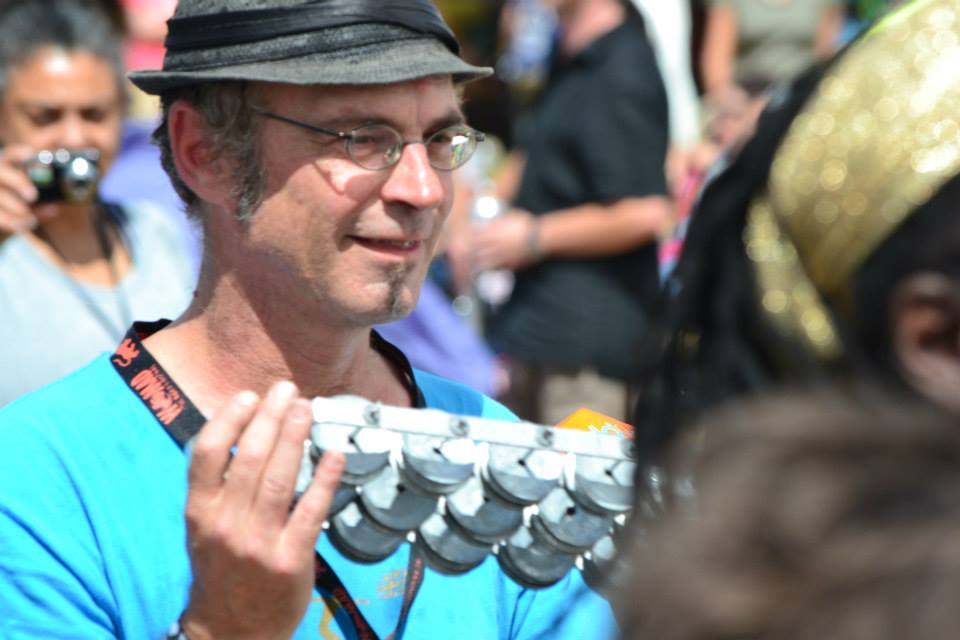1/5/2020: Mutant boogie woogie using the Brazilian partido alto rhythm
Here is a tune I composed in honour of a recently departed friend, the legendary Ozzie Pete.
It uses a partido alto rhythm in the bass, shown below. The right hand shows the partido alto rhythm (often played by the bells in Brazilian samba), with hits all the downbeats in the first bar, and all the upbeats in the second bar. This ‘on-off’ syncopation is one vital ingredient of samba’s funkiness. Likewise, the left-hand is mostly on downbeats in the first bar, and upbeats in the second, and you can see a very close relationship with the partido alto rhythm…. although, actually the partido alto is being started in the “wrong” place.

The boogie baseline also quotes from another samba rhythm, a pattern sometimes played in batucada tunes by the tamborins, and which is occasionally remembered by samba players (non-Brazilian ones anyway!) by the mnemonic “I like to go sailing in a boat”. Though, as mentioned, the baseline starts the pattern in the “wrong” place, so here the mnemonic would be: “To go sailing in a boat, I like…” Anyway, you can see again that the tamborin pattern works pretty well in the left hand. In this boogie rhythm, both the bell and tamborin batucada patterns (amongst the more treble-y sounds in a samba band) are being played in the bass by the left hand.

So this boogie pattern is like batucada put on its head. And then in a half nelson, because the start of the batucada rhythm pattern is two beats too late, compared to how it is played in samba, with the clave (often played by snare drums in samba bands) shown in the bass:

Clave means ‘key’, and it does indeed hold the key to pretty much all latin rhythms. So we can expect that a Brazilian samba player will be aware of the clave (even if only implicitly) in understanding where their patterns fit in. And where the ‘one’ is. However for non-Brazilian samba players, speaking from my own experience, it is easy to get distracted by listening to the hypnotic rhythm of the bells playing the partido alto, and the surdos (big bass drums) often reinforce that rhythm. And then it can become confusing to hear where the ‘one’ is. That is part of why samba can be a compulsive rhythm (when played well), as it seems to circle in on itself, having no start and no end.
If you only listen to the Partido alto rhythm in the example above (without the clave playing), the ‘one’ isn’t even played at all, it seems to go in a weird void space between the syncopated beats. Therefore non-Brazilian ears (and drummers) will often feel the ‘one’ of a Partido alto as being on the ‘three’ of the first bar in the above example. And that is exactly how the Ozzie Pete Shuffle bass rhythm was born – my gringo confusion about where the Partido rhythm starts!
Although, this was accidentally on purpose, as in fact this boogie rhythm, with the ‘out of sync’ partido alto, ends up being a reverse rhumba clave in disguise:

We are used to hearing rhumba rhythms in boogie woogie, particularly with artists like Professor Longhair. However, the Ozzie Pete rhythm is different, it is a reverse rhumba clave. In fact, this rhythm probably most closely resembles a salsa rhythm, which is a son clave (widely recognisable in blues as the ‘Bo Diddley’ rhythm), but played in reverse. Most (but by no means all) cuban montunos use a reverse son clave, which ends up having hits on the downbeats in the first bar, and on the upbeats in the second bar… just like our bassline.
So, the Ozzie Pete Shuffle, as well as being a loving tribute to a much missed friend (and fellow samba player), is an object lesson in how so many of these rhythms are closely related: samba, rhumba, salsa, boogie woogie. Maybe because it all began in Africa….?

